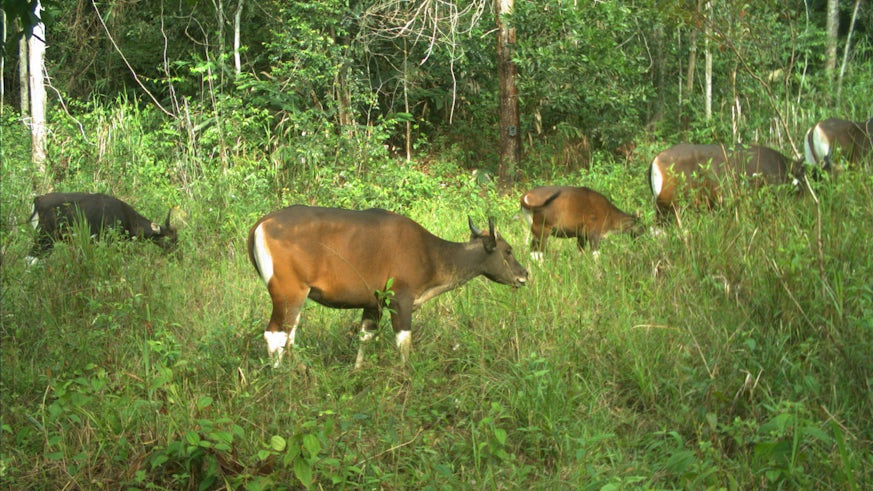Protecting the Bornean banteng
5 April 2018

New research has found that preserving large forest areas is essential in protecting the most endangered large mammal in Sabah.
The Bornean banteng is highly threatened by habitat loss, fragmentation and heavy poaching, leading it to become an endangered species. But collaborative research has uncovered factors that play a vital role in the conservation of this species.
A team of researchers from Cardiff University, the Danau Girang Field Centre and the Sabah Wildlife Department studied the herd populations in Sabah, analysing the sexual segregation and the effects of forest management, using camera traps in six forest reserves.
The researchers found that forest regeneration age, type of site within the forest reserve, presence of salt licks, habitat vegetation and distance to the nearest forest border had significant effects upon banteng herd sizes.
Dr Penny Gardner, Bornean Banteng Conservation Officer for Danau Girang Field Centre, said: “Our findings mean that logging and the type of sites created by harvesting activities are influencing the way bantengs behave and organise themselves – a very important factor for species which are highly social like the banteng.
“Bantengs need large forests to evade human activity and to maintain large herd sizes, which are crucial for maintaining social behaviours like breeding.
“We found that when the forest boundary is not far away, banteng herds become smaller, and when the population is in decline, herd sizes also become smaller.
“So, we have multiple factors at play here, such as forest loss, a reduction in forest extent, and timber harvesting, that are all driving the decline of the banteng.
“What we now need to do is to work together to find a suitable strategy to maintain forest productivity and also ensure that the banteng population, and other species, thrive and not just survive.”
The new research will inform conservation strategies for the Bornean banteng.
Dr Benoit Goossens, Director of the Danau Girang Field Centre and Reader at Cardiff University, said: “Our study contributes to a better understanding of banteng ecology and will assist in the production of effective management strategies aimed at providing suitable habitat for re-population and enabling banteng population persistence.
“In fact, last year, the Sabah Wildlife Department and Danau Girang Field Centre organised an international workshop on the conservation of the Bornean banteng.
“A 10-year action plan for the species is currently being drafted with the ultimate goal being to secure the future of the Bornean banteng in Sabah.”
The work was supported by the Houston Zoo, Malaysian Palm Oil Council, Mohamed bin Zayed Species Conservation Fund, Woodland Park Zoo and Yayasan Sime Darby.



